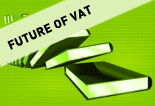Under EU legislation, excise duties are paid on alcohol, tobacco and energy products at the final point of consumption. While in transit to their final destination, these goods are in duty-suspension i.e. no excise duty has yet been paid on them.
The EMCS provides Member States with an electronic system to monitor the movement of these goods in real-time, in order to ensure that the duties are properly levied at the final destination.
The EMCS in practice
Under EMCS, a movement of excise goods is documented at every stage through an electronic Administrative Document (eAD).
- The eAD is issued by the original consignor, containing information on the consignment and the planned movement within the EU.
- The eAD is validated in the Member State of dispatch. A European register of operators (SEED) is used to check the excise numbers of the consignor and consignee.
- The eAD is electronically transmitted by the Member State of dispatch to the Member State of destination.
- The Member State of destination forwards the eAD to the consignee
- The consignee submits a "report of receipt" once he/she has received the excise goods. This report should mention any anomalies, such as shortages or excesses in the consignment.
- The report of receipt is sent to the consignor who can then discharge the movement and recover the financial guarantees they had to make for the excise products.

System of Exchange of Excise Data (SEED)
SEED is a register of economic operators, part of which traders can consult online, to see whether a given excise number is valid and what categories of goods the operator in question is authorised to trade.
It is a core component of the EMCS, as it allows Member States' administrations to validate authorisations of traders before giving them permission to move any excise goods under duty suspension.
Functional Excise System Specification (FESS)
The Functional Excise System Specification (FESS) analyses and documents all business functions and processes that are part of the Excise Movement and Control System (EMCS). It is the reference document for anyone wishing to know the exact scope of EMCS.
The FESS is updated approximately every 18 months.
Download the latest version of FESS
Read more in the FESS information paper
See also:
EMCS - Core business module. An introductory course to the EMCS
